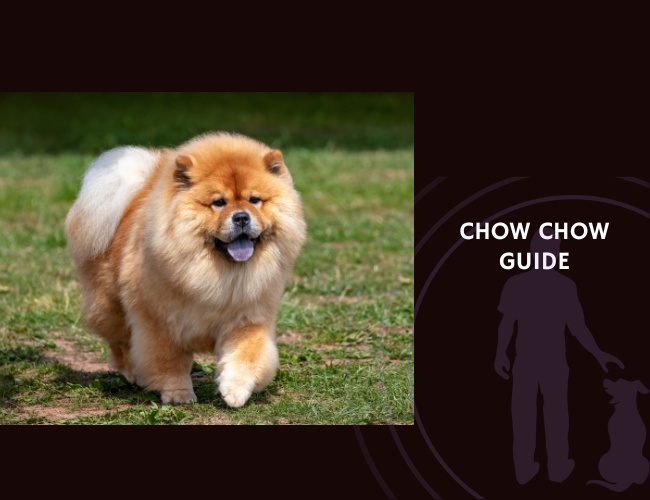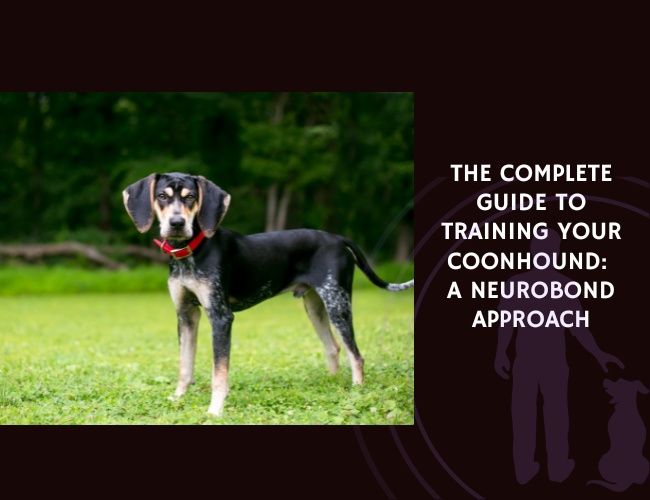Introduction to the Chow Chow Breed
Ancient Roots and Spitz Heritage
The Chow Chow stands out as one of the world’s oldest dog breeds, often listed among the “primitive” breeds. As a true Spitz-type, the breed comes from northern Asia, where ancient dog types were developed for a variety of tasks. Early Chows were bred as multi-purpose working dogs—protecting homes, guarding livestock, and sometimes even pulling carts. Their ancient lineage shows in their physical features and behavior, still noticeable today.
Iconic Appearance
It’s easy to spot a Chow Chow in a crowd! Their dense double coat, which can be rough or smooth, gives them a distinctively lion-like appearance. You might be surprised by their “scowling” face, but this regal look is part of their charm. One physical trait that truly makes them unique is their blue-black tongue. It’s rare among dogs and adds to their mystique. Their curled tail, broad head, and deep-set eyes complete the unmistakable look.
Personality: Independent and Aloof
Chow Chows are famously independent and even aloof at times. They’re not naturally flashy or eager-to-please, unlike some other breeds. While they do form strong bonds with their chosen people, they tend to be reserved with strangers. This independence isn’t just attitude; it’s a product of selective breeding for guarding and self-reliance. Chow Chows have a strong sense of personal space and may appear stubborn, but it’s really just part of their unique personality.
Understanding what makes this breed tick is the first step to building a respectful and positive relationship. Each aspect of their personality and behavior links back to their rich history, shaping their needs and preferences today.
Temperament and Personality Traits
Genetic Foundations of Independence and Aloofness
Chow Chows are famous for their independent and aloof character, which traces back to their roots as a Spitz-type breed. While research on specific genes influencing these traits in Chow Chows is ongoing, studies in canine behavioral science suggest that oxytocin signaling is linked to social behavior. For Chow Chows, the result is a dog that picks its closest humans carefully, forming deep bonds with family while being reserved—even distant—with strangers. This aloofness is not a fault, but rather a built-in feature of their ancient lineage.
Territorial Behavior and Guarding Instincts
One of the remarkable aspects of the Chow Chow’s temperament is its strong guarding instinct. Many Chow Chows were historically used as temple guardians and estate dogs, reinforcing their instincts to protect their home and loved ones. You might notice your Chow Chow “patrolling” your home or yard, becoming alert when someone unfamiliar approaches. Early socialization is vital to help them understand when to relax versus when it’s appropriate to be protective. If not taught the difference, their natural territorial behaviors can sometimes lead to overzealous guarding.
Unique Emotional Expressions and Communication Style
Communicating with a Chow Chow takes getting used to! Unlike breeds known for enthusiastic tail wagging, Chow Chows have a more subtle approach to showing how they feel. Their tail may not wag as much, and emotional cues can be gentle—think a soft nudge or lingering gaze. This understated communication style means you’ll need to learn your dog’s signals to understand their mood. While Chow Chows may appear stoic, they are quietly affectionate in their own dignified way.
Understanding these traits is the foundation for building a healthy, supportive relationship with your Chow Chow.
Training Challenges and Strategies
Understanding Motivation in the Chow Chow
Training a Chow Chow can feel like solving a gentle puzzle. Their independent nature means they are less likely to work simply for your praise. Instead, understanding what truly motivates your Chow Chow—like special treats, toys, or even a bit of quiet time—will help guide their learning. Chow Chows respond best to positive, reward-based training, as harsh methods can damage your bond and cause them to shut down.
Building a Strong Handler Bond
Creating a close relationship with your Chow Chow is key to successful training. Spending quality time together, engaging in fun activities, and maintaining a calm, supportive environment help build trust and respect. This connection encourages your Chow Chow to see you as a reliable partner, making them more responsive during training and daily routines.
Bonding tips include:
- Taking short, frequent walks together
- Using gentle touch and voice
- Celebrating small training successes
When your Chow Chow feels secure, they will participate more willingly in learning new behaviors.
Managing Low Tolerance for Repetition
Unlike some breeds that love long, repetitive training drills, Chow Chows can get bored or frustrated quickly. To avoid this, keep training sessions short—about five to ten minutes— and introduce new commands or tricks regularly. Variety helps keep their interest high and their minds engaged.
Try these strategies:
- Rotate between different tricks or skills
- Reward efforts frequently, not just perfection
- Know when your dog is losing interest—end on a positive note
By respecting your Chow Chow’s unique learning style, you build a positive training routine that works for both of you.
Moving forward, let’s look at how social connections shape your Chow Chow’s wellbeing and behavior.

Socialization Requirements
Early Socialization and Its Impact
Early socialization matters a lot for Chow Chows. This breed tends to be naturally independent and aloof, which makes exposure to the world especially important. Regular, gentle introduction to people, animals, and new places helps your Chow Chow feel confident and reduces the chances of fear or aggression later in life. Start socialization as early as possible, and continue these experiences throughout their first year.
Simple activities like short walks in calm neighborhoods, visitors at home, or positive time with other dogs set a good foundation. Always keep sessions short and rewarding to avoid overwhelming your pup.
Special Considerations with Children and Vulnerable People
Because of their guarding background, Chow Chows might be cautious or even protective around children and vulnerable individuals. It’s essential to teach children how to interact calmly and respectfully with your Chow Chow. Supervise all interactions until your dog and child understand each other’s boundaries.
For homes with elderly or immune-compromised individuals, careful, slow introductions with lots of positive reinforcement can prevent misunderstandings or startle reactions. Never leave young children unattended with any dog, especially a breed as strong-minded as the Chow Chow.
Intraspecific Communication and Dog-to-Dog Dynamics
Chow Chows show emotion in subtle ways, such as limited tail wagging or quiet presence. This unique communication style can lead to misunderstandings with more expressive breeds. Structure dog-to-dog introductions thoughtfully—choose calm, well-socialized dogs for first meetings.
Keep greetings on neutral ground and allow space for both dogs to express interest or walk away. Observe body language closely and interrupt any tense interactions early with calm redirection. With steady guidance, your Chow Chow can learn to coexist peacefully with other pets.
As you create positive social experiences, you help your Chow Chow build confidence and adapt more easily to modern family life.
Nutritional Needs and Diet Management
Macronutrient Balance and Metabolism
Chow Chows Nutrition have unique nutritional needs compared to other breeds. Their metabolism can be slower, so they require careful attention to portions and calorie intake. A balance of protein, fat, and carbohydrates is important, but you should choose high-quality proteins and healthy fats to support muscle development and general well-being. Chow Chows may need fewer calories than active breeds, making portion control even more important to prevent weight gain.
Specialized Nutrition for Coat and Skin
One of the most distinctive features of the Chow Chow is its thick double coat. To maintain its softness and shine, essential fatty acids like omega-3 and omega-6 are beneficial. These nutrients help keep the skin healthy and reduce inflammation, especially since Chow Chows can be prone to skin sensitivities and irritation. High-quality diets formulated for skin and coat care are great choices for this breed. Always ensure your dog’s diet includes vitamins and minerals that support fur growth and skin barrier function.
Managing Weight and Preventing Obesity
Obesity is a real concern for many Chow Chows, due to their slower metabolism and moderate activity levels. Overweight dogs are at risk for health problems, including joint issues and reduced mobility. To prevent this, offer measured meals rather than free-feeding, and keep treats to a minimum. Opt for healthy, low-calorie snacks, and avoid table scraps altogether. Regular weigh-ins at home can help you stay on top of any unwanted weight gain.
By nourishing your Chow Chow with the right diet, you help set the foundation for a healthy coat, strong body, and better quality of life.
Common Health Issues and Preventative Care
Eye and Vision Health
Chow Chows are quite prone to entropion, which is when the eyelid rolls inward, causing discomfort and irritation. This problem can lead to excessive tearing or even damage the eye if left untreated. Owners should watch for signs of squinting or discharge. Regular checkups by your vet will help catch this issue early. Besides entropion, other ocular concerns are noted in Chow Chows, so keeping an eye 👁️ on their vision and cleanliness is key.
Hip and Orthopedic Concerns
Another common issue for Chow Chows is hip dysplasia. It is a condition where the hip joint does not fit together properly, leading to pain and, in some cases, trouble walking. Early detection is best, so watch for limping, stiffness, or an unusual walk. Managing a healthy weight and providing low-impact exercise can help minimize joint strain over time. Speak to your veterinarian about screening for hip problems, especially as your dog ages.
Thyroid and Autoimmune Issues
Chow Chows show a relatively high rate of thyroid dysfunction. Hypothyroidism can make your dog gain weight, feel tired, or lose fur. Blood tests during annual checkups can catch problems early. Additionally, autoimmune disorders are a topic of ongoing research. While the true prevalence in Chow Chows is still being studied, staying alert to any noticeable changes in behavior or health will help you act quickly if something seems off.
Proactive care and regular veterinary visits make a big difference. With good observation and timely intervention, you can help your Chow Chow stay comfortable and healthy.
Regal. Reserved. Resolute.
Joyful Guardian. The Chow Chow doesn’t wag for anyone. Their loyalty runs deep, but only for those who earn it. Behind the lion-like coat and scowling brow lives a calm, self-assured dog whose joy comes from quiet company, not chaos.
Born to Stand Alone.
Independence is no defect—it’s their legacy. Bred for protection, for solitude, for strength without noise, the Chow Chow walks through life with purpose and distance. You don’t train them. You negotiate. You don’t command them. You communicate.
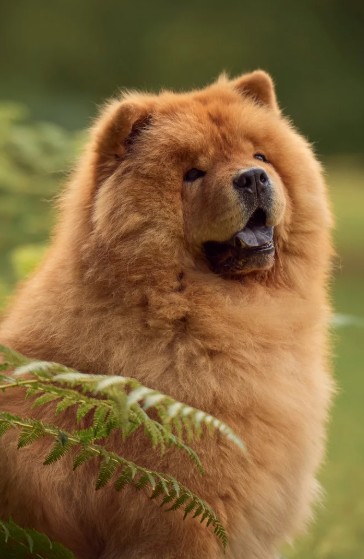
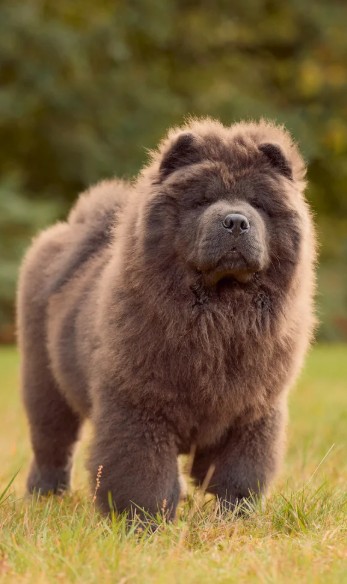
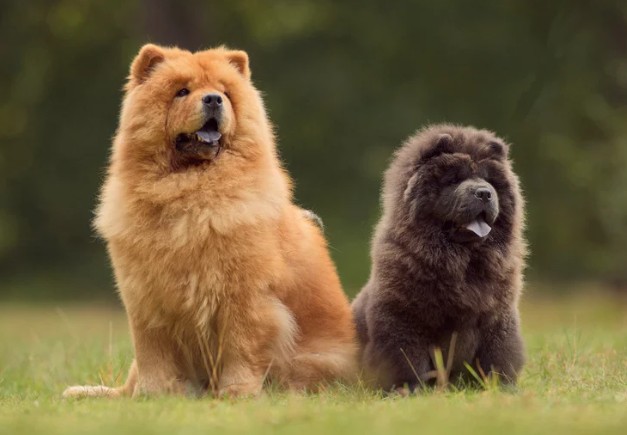
Emotionally Tuned, Just Not Loud.
This breed doesn’t shout its affection—it shows it through presence. A glance. A lean. A decision to stay close. For those who listen with more than their ears, a Chow Chow speaks volumes.
Grooming and Coat Maintenance
Taking care of a Chow Chow’s coat is essential for their comfort and health. Their dense double coat gives them their distinctive lion-like look, but it requires a solid, consistent grooming routine. If you want your Chow to look (and feel) their best, regular grooming is non-negotiable. Let’s break down exactly what you need to do.
Techniques for Maintaining Their Dense Double Coat
Chow Chows have a thick undercoat and a rough outer coat. This means brushing is key. Aim to brush your Chow at least two to three times per week. Use a slicker brush or pin brush to remove loose hair and prevent matting. Don’t forget the neck ruff, hindquarters, and behind the ears, as these spots tangle easily. For stubborn mats, a metal comb works well—just be gentle to avoid hurting your dog.
Bathing should happen about once a month or as needed. Always use a dog-specific, gentle shampoo to avoid drying out their skin.
Seasonal Shedding Management and Skin Care Routines
Chows shed heavily twice a year—this is called “blowing coat.” During these seasons, daily brushing helps keep shedding under control and prevents clusters of fur from taking over your home. A grooming rake can reach down into the undercoat if needed. Make sure to check for any debris or skin issues while grooming, since early detection helps prevent bigger problems.
Be aware that their thick coat makes them sensitive to heat, so keep grooming sessions cool and comfortable.
Grooming Practices to Prevent Dermatological Issues
Chow Chows are prone to skin issues, so proactive grooming is essential. Always dry their coat thoroughly after baths to prevent moisture-related skin infections. Regularly inspect for signs of redness, itching, or irritation. If you notice these, consult your vet early. Maintain a balanced diet to support skin and coat health since nutrition plays a major role in how their coat looks and feels.
Establishing these habits will help your Chow Chow look regal and stay healthy year-round. Let’s keep moving forward in caring for these magnificent dogs.
Exercise and Activity Requirements
Understanding Moderate Exercise Needs
Chow Chows are often mistaken for couch potatoes due to their calm demeanor, but don’t let their stoic look fool you. These dogs thrive best with moderate, regular exercise. Consistency is the key—you want to avoid both the extremes of overexertion and inactivity. Their unique double coat also makes them sensitive to heat, so outdoor activities should be timed during cooler hours like early morning or late evening. In hot weather, always ensure plenty of water and shade.
Structured vs. Unstructured Activities
Chow Chows often prefer activities with a clear purpose. Structured walks, brief obedience sessions, and planned play in a fenced yard work well for this breed. Many Chows enjoy a brisk 20-30 minute daily walk on a leash. Keep in mind that they might not be fans of repetitive fetch games or high-speed dog parks—structured activities build trust and provide just enough mental stimulation without overwhelming their natural tendency toward independence.
Unstructured exercise has its place, too. Sniffing around the yard or exploring new locations at their own pace can keep their minds engaged. Still, always supervise these sessions due to their territorial instincts and possible low tolerance of strange dogs.
Adapting to Age and Health
Chow Chows’ exercise requirements will shift as they age. Young adults may show bursts of playful energy, while seniors might favor gentle strolls or short indoor games to protect their joints. Keep an eye out for signs of discomfort or reluctance—these could signal pain, overheating, or health issues like hip dysplasia.
Staying flexible with your Chow Chow’s activity, adapting to any changes in health or mobility, ensures their comfort and emotional wellbeing. This level of attentiveness brings out the best in your loyal companion, supporting a healthy and happy life together.

Living Environment Considerations
Adapting to Various Living Spaces
Chow Chows show impressive adaptability when it comes to their living environment. Whether you reside in a cozy city apartment or a spacious house with a yard, this breed can thrive as long as certain needs are met. Chow Chows tend to be calm indoors and do not require large amounts of space as long as they receive daily walks and structured play. However, they do have a pronounced territorial streak, so having a designated area—like a cozy bed or a quiet corner—helps them relax and feel secure in any home.
If you live in an apartment, keep in mind that noise and frequent strangers can make your Chow Chow defensive. Setting clear boundaries and providing a safe retreat helps manage their territorial instincts. For homes with yards, secure fencing is essential. These dogs are natural guardians and will patrol their space, so a secure yard keeps them safe and comfortable.
Coping with Heat Sensitivity
Chow Chows are famous for their thick, double coats, but this comes with a downside—they are sensitive to heat. Hot weather can put them at risk for overheating, so it’s crucial to provide plenty of cool, shaded areas and fresh water, especially during warmer months. In summer, schedule walks during early mornings or evenings and avoid strenuous activity during peak heat. Air conditioning, floor fans, or cooling mats can make a big difference in their comfort at home.
Creating a Supportive Space
Respecting the territorial nature of a Chow Chow means carving out private spaces. These dogs appreciate a calm environment, free from constant activity or disturbances. Setting up a quiet area gives your Chow the personal space they need, and minimizes anxiety for both your dog and visiting guests.
Understanding how to structure your home and routines to fit your Chow Chow’s specific needs sets the stage for a happy, healthy relationship.
Senior Chow Chow Care
Recognizing Age-Related Health Concerns
As your Chow Chow enters their senior years, their care needs change. This breed is known for certain health challenges as they age. Common concerns include joint issues such as hip dysplasia, increased risk of thyroid dysfunction, and ongoing skin problems. You might also notice reduced mobility or signs of arthritis. Regular veterinary checkups become crucial so these issues can be monitored and managed quickly.
Keep an eye out for vision problems too. Ocular conditions like entropion may become more noticeable in older dogs. Report any eye discharge, redness, or squinting to your vet. Senior dogs might also develop autoimmune or metabolic conditions, making it essential to maintain regular diagnostic screenings.
Adjusting Daily Routines
Older Chow Chows do best with routines tailored to their slower pace. Adjust their exercise to match their mobility; gentle daily walks help maintain joint flexibility without overexertion. Avoid strenuous activity that could stress their joints or overheat them, as they remain sensitive to high temperatures through their lives.
Make home life easier by offering:
- Non-slip surfaces to help prevent falls
- Raised food and water bowls for comfort
- Soft bedding in quiet, draft-free areas
Regular grooming remains important, as aging dogs may have more sensitive skin and additional difficulty self-cleaning due to limited movement.
Supporting Quality of Life
You can maximize your Chow Chow’s comfort and happiness by being attentive to their preferences and needs. Offer frequent opportunities to rest. Pay attention to changes in appetite, thirst, or behavior—these can be early signs of health changes.
Gentle massage or physical therapy might help with stiffness. Advanced dietary support, such as supplements for joint and immune health, can benefit seniors, but always consult your vet before starting new products. Your patience and compassion make a big difference as your loyal companion grows older.
This attentive care will help your senior Chow Chow feel safe and valued as they enjoy their golden years.
Conclusion: Is the Chow Chow Right for You?
What to Expect as a Chow Chow Owner
Owning a Chow Chow is a unique commitment. These dogs are not your typical social butterflies. They value their independence and expect you to respect their space. That means you’ll need patience and a deep sense of respect for their quiet confidence. Chow Chows form strong bonds with family but remain reserved with strangers—a trait rooted in their history as guard dogs.
You should be comfortable with routine. Regular grooming, daily walks, and proactive health care are non-negotiable. Early and consistent socialization is essential to help them become friendly, well-adjusted companions. If you have young children or other pets, you’ll need to be vigilant and gentle in your introductions.
Who Thrives with a Chow Chow
The ideal Chow Chow owner is calm, consistent, and respectful. If you seek a deeply loyal, dignified companion and value quiet moments over constant cuddles, a Chow Chow may be perfect for you. They’re best suited for adults, older kids, or families who understand and appreciate canine boundaries.
A Chow Chow’s independent nature means they won’t cater to every whim. Instead, they’ll expect you to understand their subtle cues and signals. If you enjoy structured routines and don’t mind spending extra time on grooming and health care, you’ll find great joy in this partnership.
The Rewards and Challenges
Sharing your life with a Chow Chow brings great rewards. Their majestic presence and loyalty can feel like having a noble guardian by your side. They’re watchful, calm, and fiercely protective.
However, this comes with challenges. Their independence, grooming needs, and unique health concerns require dedication. But with patience and the right mindset, you’ll discover a one-of-a-kind bond, built on mutual respect and trust.
Taking all these factors into account will help you decide if a Chow Chow belongs in your life. If your lifestyle aligns with their needs, you’ll find their companionship deeply rewarding.

